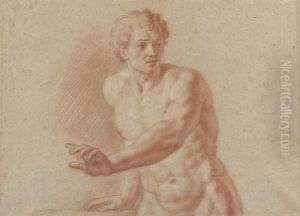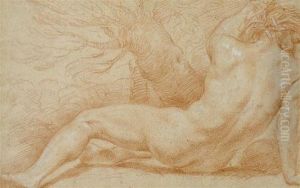Johann Lorenz Haid Paintings
Johann Lorenz Haid was an 18th-century German engraver, known for his exquisite portrait work and contributions to the world of printmaking. Born in 1702 in Augsburg, a city in the Holy Roman Empire (now Germany), Haid came from a family with a strong artistic tradition. His father, Johann Jacob Haid, was also an engraver and likely provided his first training in the arts.
Johann Lorenz Haid's career was marked by his exceptional skills in the engraving of portraits, which earned him significant recognition during his lifetime. He was adept at capturing the likeness and character of his subjects, which ranged from nobility to prominent figures of the time. His works were often characterized by their detailed execution and the fine lines that conveyed the textures of fabrics and the subtleties of facial expressions.
Haid's reputation grew as he became involved in larger projects, including book illustrations and reproductive engravings after famous paintings. Through these endeavors, he contributed to the dissemination of visual culture in an era when printed images were a primary means of spreading artistic styles and knowledge.
Despite his notable career, Haid's life was not without challenges. The economic conditions of the time, marked by political unrest and changing tastes in art, impacted the demand for engraving work. Nevertheless, Johann Lorenz Haid persevered, leaving behind a body of work that continued to influence engravers and printmakers long after his death in 1750. His legacy is preserved in the collections of various European art museums and institutions, where his engravings are studied and admired to this day.

